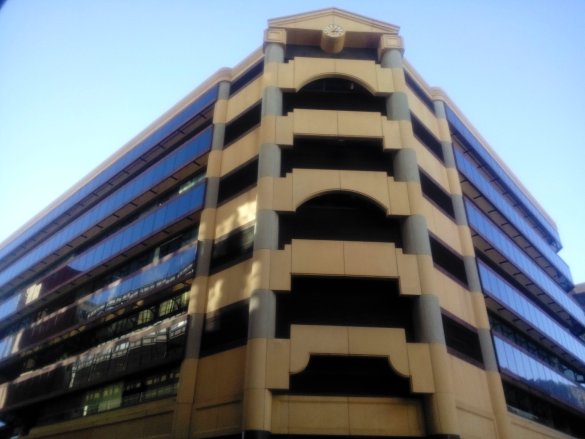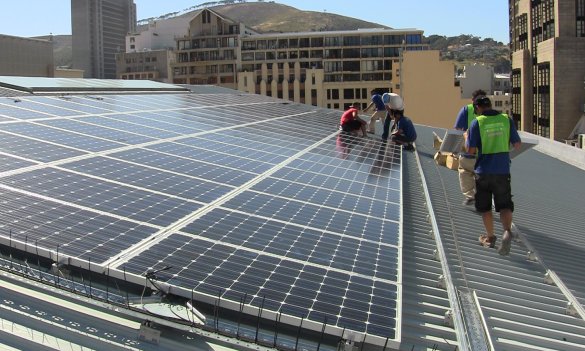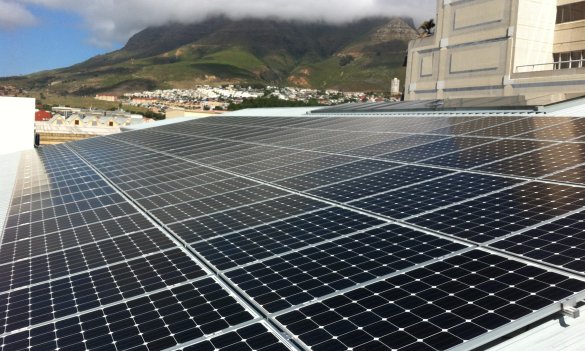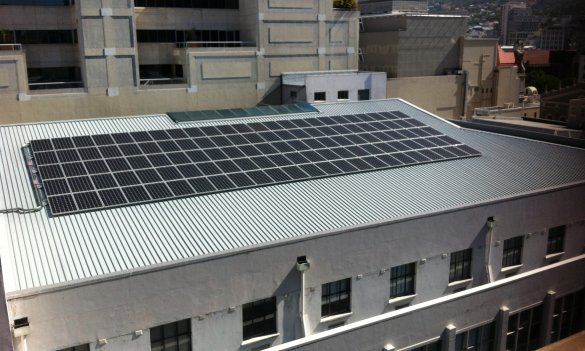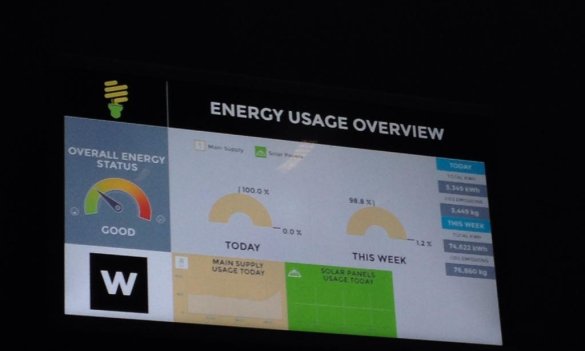Find out more about Woolworths' rooftop solar PV system and some of the retailer's energy interventions.
Did you know that the commercial sector accounts for an estimated 44% of all the electricity supply in Cape Town? Businesses therefore have more potential than ever to implement significant enhancements in energy efficiency. One such business is Woolworths – the company is making great progress in the energy space. 110% Green spoke to Sustainability Specialist at Woolworths, Makhegu Mabunda to find out more about the rooftop solar PV system installed at the Woolworths CTC building in Cape Town.
Makhegu explained that the Woolworths Cape Town head office installed two solar PV systems. The first, which was installed in 2012 as part of a pilot project, demonstrated a strong business case for rooftop PV, which led to the second installation in 2014. The Cape Town office is where many, if not all, of the important retail operations of the company take place – so it's great to see a big retailer like Woolworths implementing smart energy practices!
Phase 1
In 2012, a 30kWp rooftop solar PV system was installed at the Cape Town head office as part of a pilot project. The 30kWp system consisted of 120x250Wp solar panels, which had been surface mounted on 207m2 of roof space. It provided about 48 000 kWh of energy annually, which converts to R 33 000 in savings per annum. Makhegu explained that the installation was a means of trying to address not only the possible moments of electricity blackouts that would hinder business operations at the time, but also to lower the carbon footprint of the company. In addition, it was a pilot project aimed at illustrating the business case of installing renewable energy around Woolworths' operations. Phase 1 had made it clear that solar makes good business sense.
Phase 2
In 2014, an additional 108kWp system was installed. It consisted of 432x250W solar panels, covering 700m2 roof space. The system provided about 157 616 kWh of energy annually, which converts to R110 000 of savings per annum. Justin Smith, Woolworths’ group Head of Sustainability explained that together the 30kWp system and 108kWp system produced about 246 059 kWh of electricity in the last financial year.
Some other energy efficiency initiatives at the Woolworths Cape Town head office include: A Building Management System for light switching and air conditioning, and an online monitoring meter system called MOL. The MOL system, monitored closely by Les Hall and Woolworths' Real Estate team, reports on real-time energy and water consumption in the building. The benefits of such an online metering system is that it assists in detecting areas that require attention with regards to energy efficiency; detects leaks that could be contributing to inflated figures; provides management with online profiles of daily electricity consumption & billing; creates awareness among staff; and allows for accurate forecasting & budgeting. Consumption data is displayed on plasma screens at the entrance of the Cape Town head office buildings, as well as some Woolworths stores, to the benefit of staff and customers.
Beyond the Cape Town building, the Woolworths Palmyra store in Claremont was also recently in the spotlight as the first retail outlet in the country to achieve a 5-star rating certified by the Green Building Council South Africa (GBCSA), using the Green Star SA – Existing Building Performance Custom Tenant rating tool. Energy efficiency initiatives at this food market store include: Automatic doors to efficiently control temperature, energy-efficient LED lighting that adjusts automatically to natural light, natural gas refrigeration and vents that allow for natural light from the roof. See some of the other green features in the video below:
Outside the Western Cape, a 1MW solar PV system was installed at Woolworths' Midrand distribution centre last year, which provides for 26-34% of the centre’s energy needs. As part of the Good Business Journey, Woolworths has set a goal to halve their energy impact by 2020 and source all its energy from renewables by 2030. The Western Cape Government commends Woolworths for taking the required actions to reduce its electricity consumption. It is only through combined effort from households, businesses and government that we can make a meaningful difference to energy security in the province.
Visit Energy Security and see how you can do your part to reduce your energy consumption.
Images and information provided by Woolworths.

